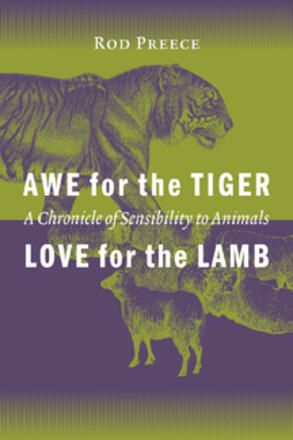
Awe for the Tiger, Love for the Lamb
A Chronicle of Sensibility to Animals
Description
In our modern world, where human will routinely presides over the natural world, it is easy to imagine that sensibility to animals has been merely a matter of peripheral concern in human history. Rod Preece, in this impressively researched volume, demonstrates that, on the contrary, respect for animals has always been a part of human consciousness.
Awe for the Tiger, Love for the Lamb brings together the most significant statements of sensibility to animals in the history of thought. Each chapter begins with an introduction that explains the significance of the passages, and relates them to each other culturally, historically, and philosophically. Myth, religion, literature, philosophy, and parliamentary debates are all represented in this compendium whose time frame stretches from the early days of recorded human history to the beginning of the twentieth century. This unique book will be welcomed by scholars interested in animal studies and the history of ideas, as well as those with a concern for animal life.
Reviews
Because it is so well researched, Preece's book will interest scholars in this field. But it should also attract a much broader readership at a time when there is increased concern for human life.
- Literary Review of Canada
Awe for the Tiger, Love for the Lamb makes a significant contribution to the burgeoning field of animal studies ... It is valuable both as a reference text, and, in a more general intellectual sense, as a book that opens up vistas, inspiring readers to delve into a topic that has been so vastly and variously addressed in so many different cultures.
- Randy Malamud, Department of English, Georgia State University, and author of Reading Zoos: Representations of Animals and Captivity